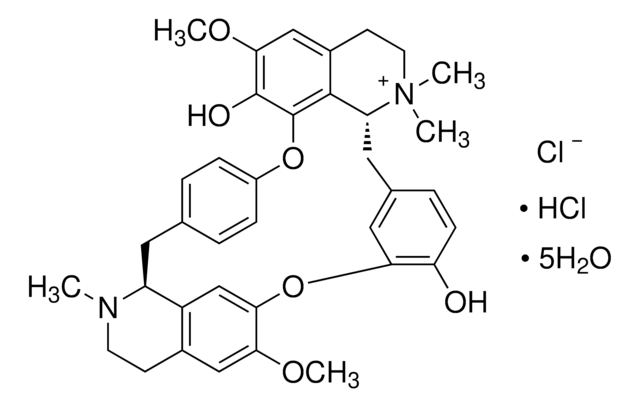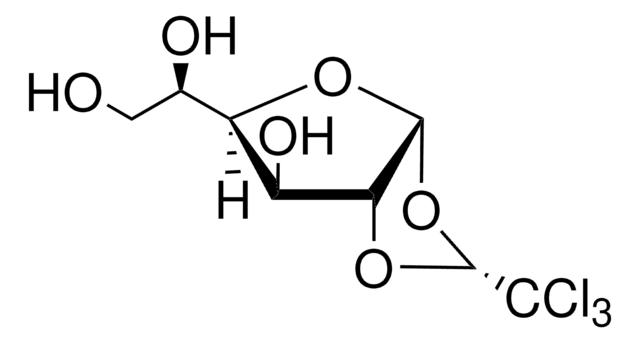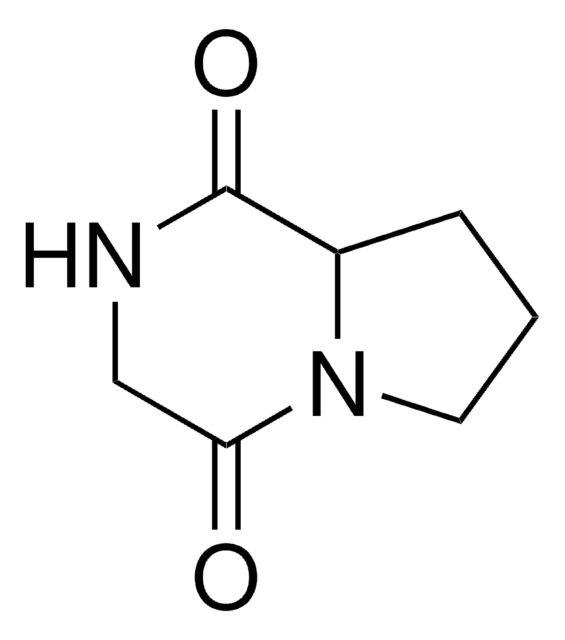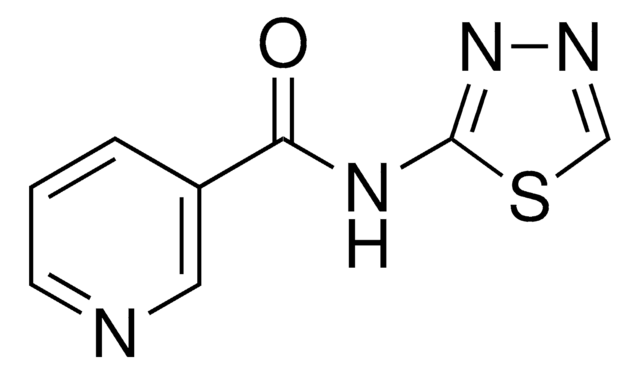Kluczowe dokumenty
C001
Acetylethylcholine mustard hydrochloride
>97% (GC), powder
Synonim(y):
Acetyl AF-64
About This Item
Polecane produkty
Poziom jakości
Próba
>97% (GC)
Postać
powder
warunki przechowywania
desiccated
kolor
white
mp
78-81 °C
rozpuszczalność
H2O: >5 mg/mL
ethanol: soluble
methanol: soluble
temp. przechowywania
−20°C
ciąg SMILES
Cl[H].CCN(CCCl)CCOC(C)=O
InChI
1S/C8H16ClNO2.ClH/c1-3-10(5-4-9)6-7-12-8(2)11;/h3-7H2,1-2H3;1H
Klucz InChI
CHWPASAPXMNLKO-UHFFFAOYSA-N
Zastosowanie
Działania biochem./fizjol.
Przestroga
Hasło ostrzegawcze
Danger
Zwroty wskazujące rodzaj zagrożenia
Zwroty wskazujące środki ostrożności
Klasyfikacja zagrożeń
Acute Tox. 2 Dermal - Acute Tox. 2 Inhalation - Acute Tox. 2 Oral - Eye Irrit. 2 - Skin Irrit. 2 - STOT SE 1 - STOT SE 3
Organy docelowe
Nervous system, Respiratory system
Kod klasy składowania
6.1A - Combustible acute toxic Cat. 1 and 2 / very toxic hazardous materials
Klasa zagrożenia wodnego (WGK)
WGK 3
Temperatura zapłonu (°F)
204.8 °F - closed cup
Temperatura zapłonu (°C)
96 °C - closed cup
Certyfikaty analizy (CoA)
Poszukaj Certyfikaty analizy (CoA), wpisując numer partii/serii produktów. Numery serii i partii można znaleźć na etykiecie produktu po słowach „seria” lub „partia”.
Masz już ten produkt?
Dokumenty związane z niedawno zakupionymi produktami zostały zamieszczone w Bibliotece dokumentów.
Nasz zespół naukowców ma doświadczenie we wszystkich obszarach badań, w tym w naukach przyrodniczych, materiałoznawstwie, syntezie chemicznej, chromatografii, analityce i wielu innych dziedzinach.
Skontaktuj się z zespołem ds. pomocy technicznej









